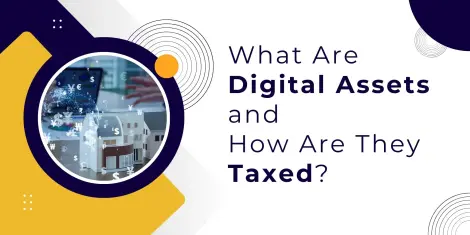Table of Contents
The Work Opportunity Tax Credit (WOTC) is a federal tax credit program that incentivizes employers to hire individuals from certain target groups who face significant barriers to employment. By participating in the WOTC program, companies can receive substantial tax credits for each eligible employee they hire and retain, resulting in significant cost savings and contributing to a more diverse and inclusive workforce. Having an effective WOTC program in place is crucial for companies to fully leverage these benefits. Let’s explore various strategies and best practices to help you optimize your company's WOTC program, ensure compliance, maximize tax savings, and foster a diverse workforce!
Understanding WOTC Eligibility Requirements
The foundation of a successful WOTC program lies in thoroughly understanding the eligibility requirements for the target groups. The WOTC program covers a wide range of individuals, including veterans, individuals with disabilities, ex-felons, recipients of government assistance programs (e.g., TANF, SNAP), vocational rehabilitation referrals, summer youth employees, and Supplemental Security Income (SSI) recipients. The government publishes the latest eligibility criteria and requirements can change periodically due to legislative updates or policy modifications. You must keep pace with these changes that can lead to missed opportunities or potential compliance issues. Employers should make it a priority to regularly review the eligibility guidelines provided by the U.S. Department of Labor's Employment and Training Administration (ETA) website and consult with their state workforce agencies.
In addition to understanding the specific criteria for each target group, it's important to familiarize yourself with the documentation required to substantiate an individual's eligibility. For example, veterans may need to provide DD-214 or other discharge paperwork, while recipients of government assistance may need to provide proof of benefits received. Having a clear understanding of these documentation requirements can streamline the screening and verification process. By staying informed and up-to-date on WOTC eligibility requirements, employers can ensure that they are maximizing their tax credit opportunities while remaining compliant with the program's guidelines. This foundation is essential for building an effective and efficient WOTC program that delivers tangible benefits to the company.
Streamline the Screening and Hiring Process
Integrating WOTC screening into your company's hiring process is essential for maximizing the benefits of the program. This involves collecting the necessary information from job applicants to determine their eligibility for WOTC.
Best practices for streamlining the screening process include:
- Incorporating WOTC-related questions into job applications: Include specific questions or sections in your online or paper job applications that gather relevant information about the applicant's potential eligibility for WOTC. This approach ensures that the necessary data is collected from the outset, streamlining the process.
- Collecting WOTC information during the interview process: Train your interviewers to ask targeted questions that can help determine an applicant's WOTC eligibility. This can include inquiries about their employment history, veteran status, disability status, or participation in government assistance programs. Embedding these questions into the interview flow can make the process more seamless.
- Providing clear instructions and guidance to applicants: Develop concise and easy-to-understand instructions or guidelines that explain the WOTC program and the specific information required from applicants. This transparency can encourage accurate and complete responses, reducing the need for follow-ups or clarifications later on.
- Utilizing electronic onboarding systems: Leverage digital onboarding platforms or applicant tracking systems that can integrate WOTC screening into the hiring process. These systems can automate the collection and storage of WOTC-related data, minimizing manual effort and potential errors.
- Implementing WOTC software solutions: Consider investing in specialized WOTC software that can streamline the entire process, from eligibility screening to form management and reporting. These solutions often offer advanced features such as automated screening, electronic form completion, and integration with existing HR systems.
By seamlessly integrating WOTC screening into the hiring workflow, employers can ensure that no potential tax credit opportunities are missed. However, this integration requires careful planning and execution to avoid disruptions or delays in the recruitment process. Collaborate with your hiring managers and recruitment teams to identify the most appropriate stages for collecting WOTC-related information, ensuring a smooth and efficient flow. It is also important to provide comprehensive training to your recruitment team on the significance of WOTC and the specific information required during the screening process. This will enable you to effectively communicate the program's benefits to candidates and gather the necessary details accurately. Clear communication and a well-defined process can significantly improve the quality of WOTC data collected, reducing the need for follow-ups or additional verification steps later on.
Training Your HR Team
Your human resources (HR) team plays a pivotal role in the success of your WOTC program. Comprehensive training on WOTC eligibility criteria, documentation requirements, and compliance procedures is essential for ensuring consistent and accurate implementation. Consider covering the following topics in your WOTC training: an overview of WOTC and its benefits for the company, detailed eligibility criteria for each target group, required documentation and forms for different target groups, compliance guidelines and deadlines for submitting WOTC applications, and best practices for record-keeping and documentation management.
Regularly updating your HR team with the latest WOTC information and providing ongoing training opportunities is crucial to maintaining a well-informed and proficient workforce. Beyond the initial training, it's important to establish a culture of continuous learning within your HR department. Encourage your team members to stay abreast of any changes or updates to WOTC regulations, tax credit amounts, or eligibility criteria by attending webinars, industry events, or seeking guidance from WOTC experts or consultants. Furthermore, consider designating WOTC subject matter experts or champions within your HR team. These individuals can serve as internal resources, providing guidance and support to their colleagues and ensuring consistent implementation of best practices across the department. Regular knowledge-sharing sessions or meetings can facilitate the dissemination of WOTC-related information and foster a collaborative learning environment.
By investing in comprehensive training and fostering a culture of continuous learning, you empower your HR team to effectively navigate the complexities of the WOTC program, maximizing its benefits for your company while ensuring compliance with all relevant regulations.
Effective Documentation and Record-keeping
Accurate and complete documentation is a critical component of WOTC compliance. Employers must maintain detailed records for each WOTC-eligible employee, including proof of eligibility, employment verification, and other relevant documentation. Different target groups may require specific types of documentation, such as DD-214 or other discharge paperwork for veterans, proof of receipt of benefits (e.g., TANF, SNAP) for recipients of government assistance, and documentation of conviction and release dates for ex-felons.
It's essential to understand the specific documentation requirements for each WOTC target group to ensure compliance. Consult the latest guidelines from the Department of Labor and state workforce agencies to stay updated on the acceptable forms of documentation. Failure to maintain proper documentation can result in denied tax credit claims or potential audits. Establish a system for organizing and securely storing WOTC-related documentation, ensuring easy access for audits and compliance purposes. Consider implementing the following two best practices:
Electronic Document Management Systems
Leverage electronic document management systems to streamline record-keeping processes. These systems allow you to digitize and centralize all WOTC-related documentation, making it easier to store, retrieve, and share information as needed. Look for systems that offer robust security features, such as access controls and encryption, to protect sensitive employee data.
Regular Audits and Quality Control
Conduct regular internal audits and quality control checks to ensure the accuracy and completeness of your WOTC documentation. This proactive approach can help identify and address any potential issues before they escalate, reducing the risk of non-compliance and associated penalties.
Leveraging Technology and Automation
In today's digital age, leveraging technology and automation can significantly enhance the efficiency and accuracy of your WOTC program. WOTC software and automated solutions offer numerous benefits, including electronic form management for streamlined collection and processing of WOTC-related forms and documentation, automated screening of applicants based on WOTC eligibility criteria, comprehensive reporting capabilities for tracking WOTC credits and program performance, and seamless integration with existing HR and payroll systems for data synchronization.
When evaluating WOTC software solutions, look for features that align with your company's specific needs and requirements. Automation can significantly reduce the administrative burden, minimize errors, and ensure timely submission of WOTC applications. However, it's crucial to assess the scalability and flexibility of the software to accommodate your company's growth and changing needs over time.
In addition to streamlining processes, technology can provide valuable insights and analytics to inform your WOTC strategy. Advanced reporting tools can help you track your program's performance, identify areas for improvement, and make data-driven decisions to optimize your tax credit claims. Furthermore, integrating your WOTC software with existing HR and payroll systems can eliminate redundant data entry, reducing the risk of errors and enhancing overall operational efficiency. As you leverage technology and automation, it's essential to prioritize data security and privacy. Ensure that the WOTC software you choose adheres to industry-standard security protocols and offers robust access controls and encryption features to protect sensitive employee information.
Establishing Quality Control Measures
Maintaining high accuracy and quality standards is crucial for ensuring compliance with WOTC regulations and maximizing tax credit savings. Implement regular audits and quality control checks to identify and address any potential issues or inconsistencies. Consider implementing a review process for WOTC applications before submission, involving cross-functional teams or designated subject matter experts. This can help catch any errors or missing information, reducing the risk of rejected applications or audits.
Establish robust quality assurance protocols throughout the entire WOTC process, from data collection to application submission. Conduct random sampling and thorough reviews of WOTC documentation to ensure adherence to guidelines and identify areas for process improvement. Regularly assess the effectiveness of your quality control measures and make necessary adjustments to maintain a high level of accuracy and compliance.
Foster Collaboration and Communication
Effective collaboration and communication across different departments and stakeholders are essential for optimizing your WOTC program. HR, payroll, finance, and other relevant teams should work in tandem to ensure seamless implementation and adherence to WOTC requirements. Establish clear communication channels and regular meetings to discuss WOTC-related updates, challenges, and opportunities for improvement. Involve stakeholders from different levels, including senior management, to ensure buy-in and support for the program. Encourage cross-functional cooperation and knowledge sharing, as each department may bring unique perspectives and expertise that can contribute to the overall success of your WOTC program.
Conclusion
Optimizing your company's WOTC program requires a comprehensive approach that encompasses understanding eligibility requirements, streamlining processes, providing training, maintaining accurate documentation, leveraging technology, implementing quality control measures, and fostering collaboration. NSKT offers a comprehensive suite of WOTC solutions designed to streamline and optimize your company's WOTC program. Our services include software implementation that automates the entire WOTC process, from eligibility screening to form management and reporting. We also provide consulting and training services, where our team of WOTC experts offers customized consulting and training to ensure your staff is well-equipped to implement and maintain an effective WOTC program. You can outsource your WOTC program to NSKT and benefit from our expertise and efficient processes, freeing up your internal resources.
Invest in improving your WOTC program today and unlock the full potential of this valuable tax credit opportunity for your company. Contact us today to learn more about how NSKT can help you maximize your WOTC tax credit savings and compliance.







